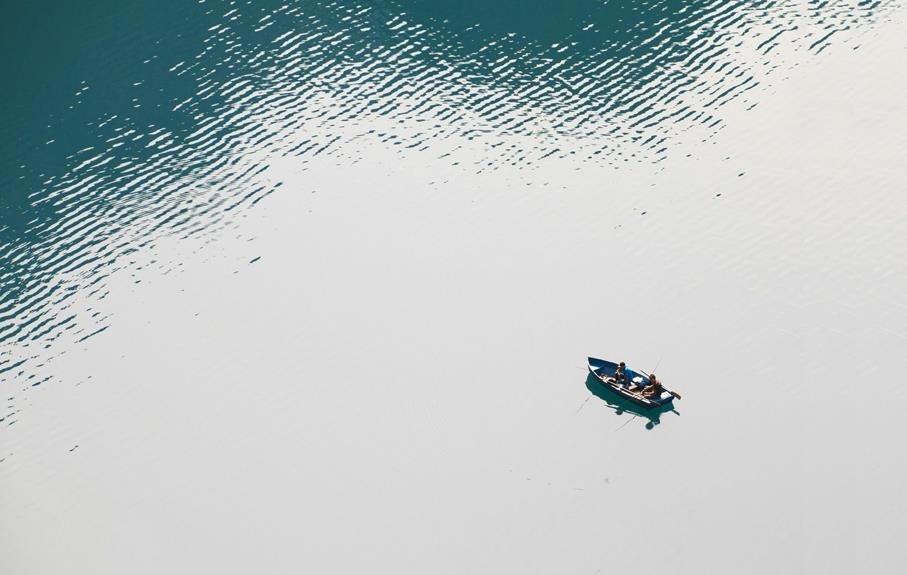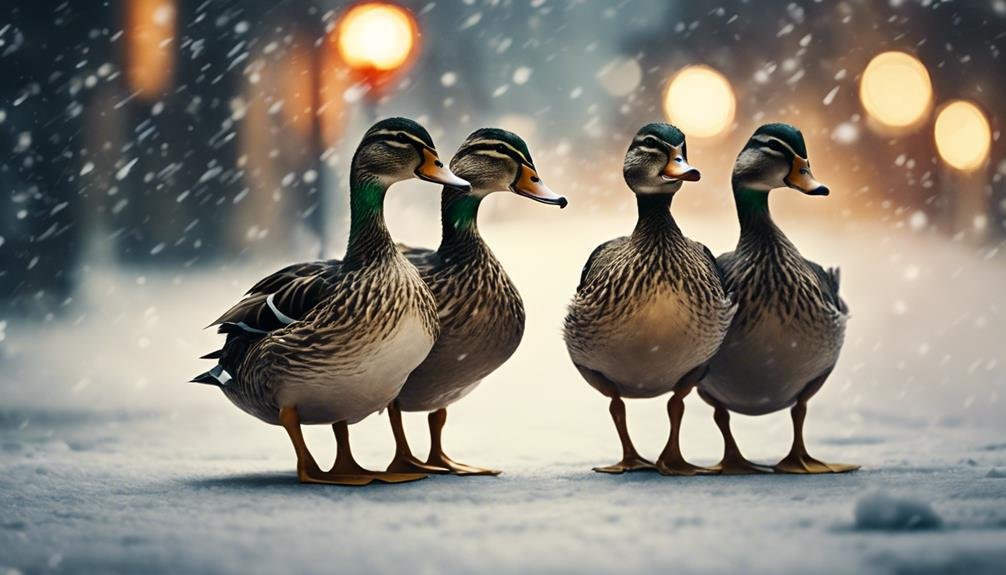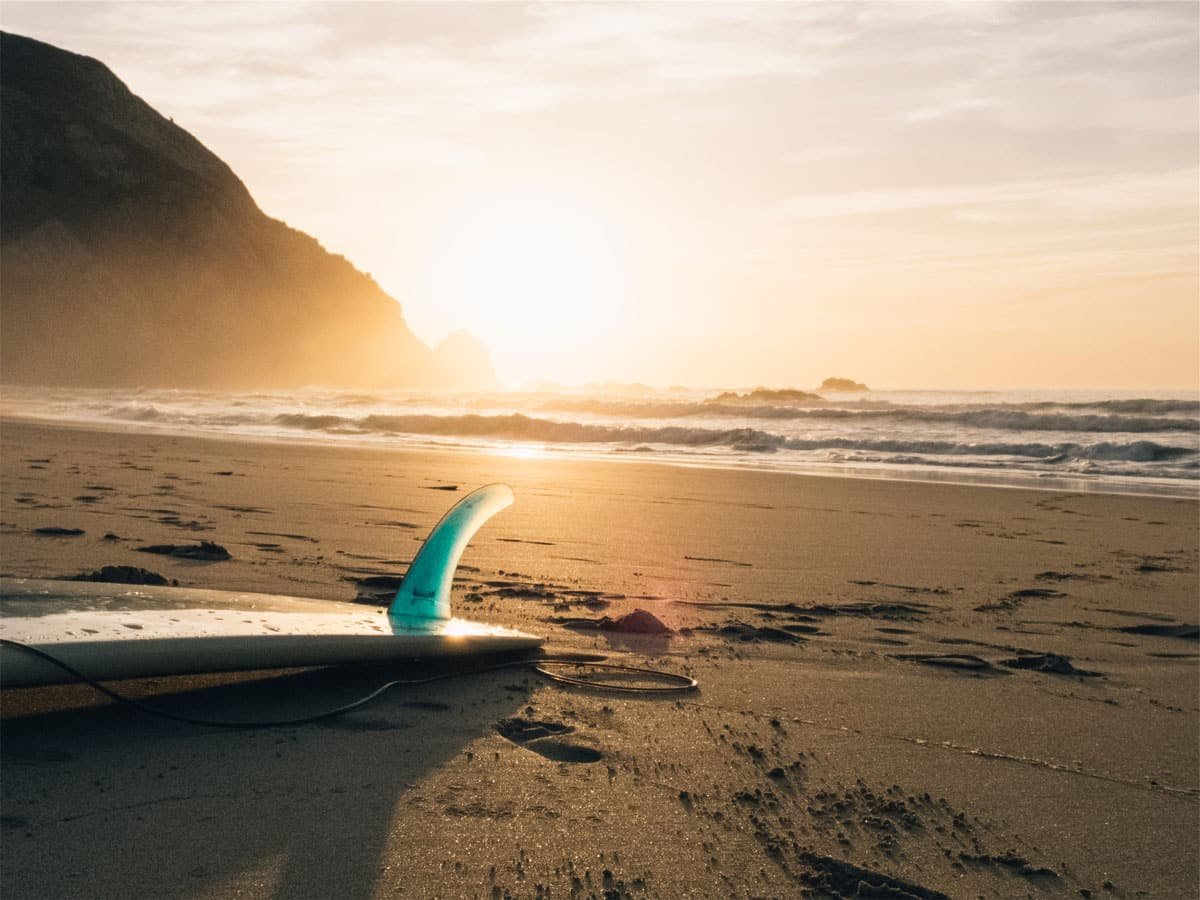Saltwater bay fishing presents a dynamic and complex fishing environment, characterized by diverse habitats, complex coastal dynamics, and a wide variety of species. Understanding the convergence of freshwater and saltwater, as well as tidal cycles, is vital for successful fishing strategies. Anglers must adapt to changing conditions, possessing a range of techniques and suitable gear, including heavy action rods and fluorocarbon leaders. Popular species include striped bass, red drum, and speckled trout. By grasping the intricacies of saltwater bay ecology and fishing techniques, anglers can refine their skills and contribute to marine ecosystem conservation, and discover even more about this fascinating fishery.
Key Takeaways
- A 7-foot heavy action rod with a 20-pound monofilament line and 50-pound fluorocarbon leader is ideal for saltwater bay fishing.
- Understanding bay ecology and coastal dynamics is essential for effective fishing strategies in saltwater bays.
- Convergence zones, where freshwater and saltwater meet, offer high biodiversity and biomass, making them critical habitats for many species.
- Tidal cycles profoundly influence the behavior and movement of target species in saltwater bays, making it essential to understand tidal stages.
- Adapting fishing techniques to suit prevailing tidal and current conditions is vital for successful saltwater bay fishing.
Essential Gear and Techniques
When venturing into saltwater bay fishing, anglers should equip themselves with a 7-foot heavy action rod paired with a spinning reel or baitcaster reel, accompanied by a 20-pound monofilament line and a 50-pound test fluorocarbon leader. This setup provides the necessary strength and durability to tackle larger species. Saltwater rods, specifically designed for bay fishing, feature heavy action to withstand the power of strong-fighting fish. The fluorocarbon leader adds an extra layer of abrasion resistance and stealth, allowing for a more effective presentation of lures or baits. With the right gear, anglers can focus on refining their techniques, such as drifting, trolling, or casting, to increase their chances of landing a prized catch in the saltwater bay.
Exploring Saltwater Bay Environments
Saltwater bays, characterized by a mix of fresh and saltwater, offer a diverse range of environments that attract a wide variety of species, providing anglers with an array of opportunities to target specific fish. Bay ecology plays a vital role in shaping these environments, with factors such as water chemistry, sedimentation, and nutrient cycling influencing the distribution and abundance of species. Coastal dynamics, including tidal and wave action, also impact bay environments, creating unique habitats such as estuaries, mangroves, and seagrass beds. Understanding these complex interactions is essential for effective fishing strategies, as different species are adapted to specific environments. By recognizing the intricate relationships between bay ecology and coastal dynamics, anglers can increase their chances of success in these productive fishing grounds.
Convergence Zones and Merging Water
Convergence zones, where freshwater and saltwater meet, create dynamic areas of merging water characterized by distinct hydrological and biological properties. These convergence zones are areas of intense biological activity, where the mixing of waters creates unique conditions that support a diverse range of marine life. The merging waters in these areas bring together nutrients, sediments, and organic matter, creating a rich source of food for fish and other marine species. Convergence hotspots, where the freshwater and saltwater meet, are particularly productive areas, with high levels of biodiversity and biomass. These areas are critical habitats for many species, providing essential spawning, feeding, and nursery grounds. Effective fishing strategies can be developed by understanding the dynamics of these convergence zones and merging waters.
Fishing Strategies and Tactics
Employing a thorough understanding of the hydrological and biological properties of convergence zones, anglers can develop effective fishing strategies that capitalize on the unique characteristics of these dynamic areas. This knowledge enables anglers to adapt their tactics to the specific environment, increasing their chances of success.
To maximize their catch, anglers should:
- Adopt an angler mindset that prioritizes patience, persistence, and adaptability
- Employ fishing ethics that respect the environment and conserve resources
- Utilize a range of fishing techniques, including drifting, trolling, and anchoring
- Continuously monitor and respond to changes in the convergence zone's hydrological and biological properties
Popular Saltwater Bay Species
In the dynamic environments of saltwater bays, a diverse array of species thrive, with certain popular species attracting anglers from around the world. Among these, Striped Bass are a prized catch, known for their impressive size and strong fighting ability. Their fish behavior is characterized by their tendency to school in large groups, often near structures such as reefs or wrecks.
| Species | Average Size | Habitat Preference |
|---|---|---|
| Striped Bass | 20-40 inches | Rocky structures, estuaries |
| Red Drum | 20-30 inches | Shallow waters, mangroves |
| Speckled Trout | 10-20 inches | Seagrass beds, shallow waters |
| Flounder | 10-20 inches | Sandy or muddy bottoms |
| Bluefish | 10-20 inches | Open waters, near schools of baitfish |
Mastering Bottom Fishing Techniques
When targeting species such as striped bass, red drum, and flounder in saltwater bays, mastering bottom fishing techniques is essential, as these species often inhabit areas with complex bottom structures. Effective bottom fishing techniques require an understanding of the bay's ecosystem and the species that inhabit it. This knowledge is vital for sustainable fishing practices that support Bay Conservation efforts and promote healthy Fishing Communities.
To master bottom fishing techniques, consider the following:
- Use the right gear, such as a heavy action rod and a 20-pound monofilament line, to withstand the strength of the targeted species.
- Employ techniques like drifting or anchoring to reach the desired depth and structure.
- Choose lures or baits that mimic the natural food sources found in the bay.
- Pay attention to the tides and water conditions to optimize your fishing experience.
Understanding Saltwater Bay Structures
Saltwater bay structures, including reefs, hills, and channels, play a vital role in shaping the habitat and behavior of species such as striped bass, red drum, and flounder, making it essential to understand these structures to effectively target these species. Bay formation and coastal geology profoundly influence the development of these structures, which in turn affect the distribution and abundance of marine life. Reefs, for instance, provide habitat for species that require complex structures, while hills and channels create areas of varying depth and bottom contour that can concentrate prey and predators. Understanding these structures is pivotal for identifying productive fishing grounds and developing effective fishing strategies. By recognizing the interplay between bay formation, coastal geology, and marine life, anglers can increase their chances of success in saltwater bay fishing.
Trolling and Anchoring Techniques
Trolling and anchoring techniques are essential components of a successful saltwater bay fishing strategy, as they enable anglers to present lures or baits to targeted species in a controlled and deliberate manner. These techniques allow for precise targeting of specific habitats and structures, increasing the likelihood of catching desired species.
Some effective trolling and anchoring techniques include:
- Trolling Tactics: Using lures or baits at varying depths and speeds to target species such as striped bass and bluefish.
- Anchoring Strategies: Positioning the vessel near structures like reefs or channels to target species like flounder and black drum.
- Depth Control: Adjusting the presentation to target specific depths and habitats.
- Speed Management: Varying the speed of the vessel to optimize lure or bait presentation.
Effective Lure Selection and Use
Six key factors influence the effectiveness of lures in saltwater bay fishing: size, color, shape, action, movement, and scent, all of which must be carefully considered when selecting and using lures to target specific species. Effective lure selection and use involve presenting the right bait in the right way to appeal to the target species. Bait presentation is critical, as it can make or break a fishing trip. Line selection is also vital, as it can affect the action and movement of the lure. A 20-pound monofilament line, for instance, can provide the necessary strength and flexibility for presenting lures effectively. By carefully considering these factors, anglers can increase their chances of success in saltwater bay fishing.
Fishing the Tides and Currents
Frequently, understanding and adapting to the dynamic tidal and current patterns in saltwater bays is essential for successful fishing, as these environmental factors profoundly influence the behavior and movement of target species. Tidal cycles, which involve the regular rise and fall of sea levels, substantially impact the movement and feeding patterns of fish. Current patterns, including strong currents and eddies, also play a vital role in shaping the fishing experience.
Some key considerations for fishing the tides and currents include:
- Identifying the ideal tidal stages for targeting specific species
- Understanding how current patterns affect the movement and behavior of fish
- Adapting fishing techniques to suit the prevailing tidal and current conditions
- Recognizing the impact of tidal cycles and current patterns on baitfish and predator-prey relationships
Saltwater Bay Fishing Resources
In saltwater bay fishing, access to reliable resources and educational materials is essential for anglers seeking to improve their skills and stay informed about the latest techniques, regulations, and best practices. Anglers can benefit from online resources, such as the Angler Academy, which offers interactive learning tools and tutorials on various fishing techniques. In addition, fishing communities and organizations, such as the Recreational Boating and Fishing Foundation, provide valuable resources on saltwater conservation, fishing regulations, and best practices. These resources enable anglers to make informed decisions and adopt sustainable fishing practices, ultimately contributing to the conservation of saltwater ecosystems. By leveraging these resources, anglers can enhance their skills, stay informed, and promote responsible saltwater bay fishing practices.
Staying Up-To-Date With Fishing News
Staying informed about the latest fishing news, regulations, and best practices is essential for saltwater bay anglers seeking to refine their skills and contribute to the conservation of marine ecosystems. To stay up-to-date, it is vital to follow reliable sources of fishing news and information. This can include:
- Subscribing to newsletters and online publications that provide regular updates on fishing forecasts, industry trends, and regulatory changes
- Following reputable fishing organizations and experts on social media to stay informed about the latest developments and best practices
- Participating in online forums and discussion groups to exchange knowledge and experiences with other anglers
- Attending workshops, seminars, and conferences to learn from experts and network with other anglers
Frequently Asked Questions
What Are the Best Times of Year to Fish in Saltwater Bays?
Ideal fishing times coincide with favorable tide cycles and water temperatures, typically during spring and fall when temperatures range from 60°F to 80°F, and during peak tidal cycles, increasing the likelihood of encountering active fish.
Can I Fish in Saltwater Bays Without a Boat?
Can one effectively fish without the luxury of a boat? Yes, wade fishing and shore access provide viable alternatives, allowing anglers to target species in saltwater bays without relying on a vessel.
Are Saltwater Bay Fish Safe to Eat?
When consuming fish, bear in mind Mercury levels and Contamination risks, as they can impact human health. Fish can accumulate toxins, making them unsafe for consumption, highlighting the need for awareness and responsible seafood choices.
Can I Catch Sharks in Saltwater Bays?
Silky sharks slice through serene saltwater expanses, seeking unsuspecting prey. Yes, several shark species, such as bull, bonnethead, and blacktip, can be caught in saltwater bays using tactics like bottom fishing and trolling with baited hooks.
Do I Need a Special License to Fish in Saltwater Bays?
Yes, special licenses are often required to fish in saltwater bays, as regulations vary by state and species; additionally, gear restrictions may apply, and species identification is vital to guarantee compliance with local fishing regulations.
Conclusion
To summarize, saltwater bay fishing necessitates a thorough understanding of gear, techniques, and environments to guarantee success. By recognizing the complexities of convergence zones, mastering fishing strategies, and selecting effective lures, anglers can increase their chances of catching popular species. Staying informed about fishing news and resources is vital for adapting to the dynamic saltwater bay ecosystem. Despite the challenges posed by this unique environment, a thorough understanding of the intricacies involved can lead to a rewarding and productive fishing experience.









